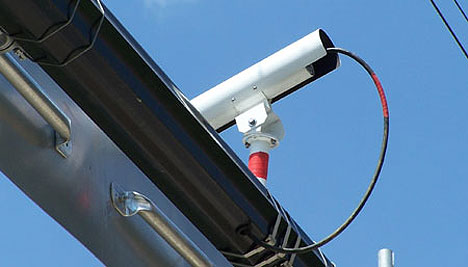Good luck Mr. Newell, and we hope that Mr. Silver will now move the community forward.
Wednesday, September 10, 2008
Silver wins
We hope that we can once again move forward as a community. It would be great to see some form of traffic control introduced in the district and in the city as a whole. Even requesting that Chinatown busses stop idling their engines would be a leap forward for air quality in this district.
Monday, September 8, 2008
Silver's Rebuttal

On WNYC this morning Sheldon Silver argued that the only reason he didn't support congestion pricing was that there was no MTA capital plan in place to provide local residents with transportation.
Well, Mr. Silver, how is the MTA supposed to have a capital plan without any capital?
Congestion pricing is one of the few sure fire ways to pay off the MTA's debts. Some have argued that the implementation and operation cost of congestion pricing would be high, offsetting the gains. However, the implementation and operation costs are already in play; the infrastructure is under construction as part of Operation Atlas, New York City's anti-terrorist operation.
Monday, September 1, 2008
As if we need more evidence...

A study by Paul Leigh and Estrella Geraghty in the Journal of Occupational and Environmental Medicine found that a 20% increase in gasoline prices over one year saves 2594 lives in the US. Of these, 1994 people are saved because there are fewer accidents and 600 are saved because there is less pollution.
So, why do so many of us own cars in a city with excellent public transit?
Sunday, August 31, 2008
The Albany Project give us a shout out

The Albany Project has given Doctors for Congestion Pricing a moment in the spotlight.
This is a good time to respond to the good and bad comments we have received.
Argument 1: Congestion pricing will not save lives because it will not reduce congestion.
Response: Well, in Singapore, Stockholm, and London, it seems to have reduced congestion by 30-45% (measured as the number of cars within the congestion pricing zone). Here are the stats for Singapore according to the Environmental Defense Fund: 45% reduction in cars on the road, 10 MPH increase in average driving speed (not necessarily a good thing from a health standpoint), 25% fewer accidents, a 20% increase in the use of public transportation. They conduct rigorous analyses, but are indeed partisan. It would be good to see some non-partisan data on this. But from the reduction in car use and increases in public transit we have seen from the recent increase in fuel prices, we can be fairly confident that the good old relationship between price and demand is still in effect in our new economy.
Argument 2: Hey, you guys are a bunch of phonies, what with your anonymous postings.
Response: Good point. This blog was started by Peter Muennig, an Assistant Professor in Health Policy and Management at Columbia University. I'll let others identify if they so wish. My funding comes from the federal government. New Jersey is my only state funding, so I'll worry about Silver once he is defeated and takes a federal post!
Sunday, August 24, 2008
WSJ says bikes cause pollution
Whether bike lanes pose formidable barriers to driving is debatable and context dependent. However, this opinion piece ignores decades of research demonstrating that increasing barriers to driving actually decreases congestion. On this there is near consensus.
Thus, Rob Anderson is simply flaunting his ignorance for the world to see.
San Francisco saw a dramatic decline in street traffic after the 1989 earthquake wiped out the main freeway artery running through the city. Bike lanes will produce a similar effect as more folks move to public transit.
Wednesday, August 6, 2008
Green city

The MTA is funded both by property taxes and by ridership, yet is still a money losing venture. Part of the reason for this is that it is serving neighborhoods with a lot of automobile owners. Unfortunately, it is serving them poorly. To address this problem, more funding is needed for subsidized express bus service and subway improvements (e.g., upgrades to the G line, a second avenue subway line).
Crime is up, particulate matter is up (especially the small particles that cause lung cancer), and services are being gutted. With the rental market softening now, NYC needs to attract more first time residents, especially homeowners, by cleaning the air, improving recreation, and strengthening mass transit.
Tuesday, August 5, 2008
Do people avoid the outdoors during smog alerts?
We know that childhood mortality rates increase on smoggy days, and that adult heart and lung disease admissions increase as well. Matthew Neidell at Columbia University demonstrates that smog impacts people's non-health quality of life, too. On smog alert days, Angelinos avoid going to the zoo and other public places as well.
Subscribe to:
Posts (Atom)
